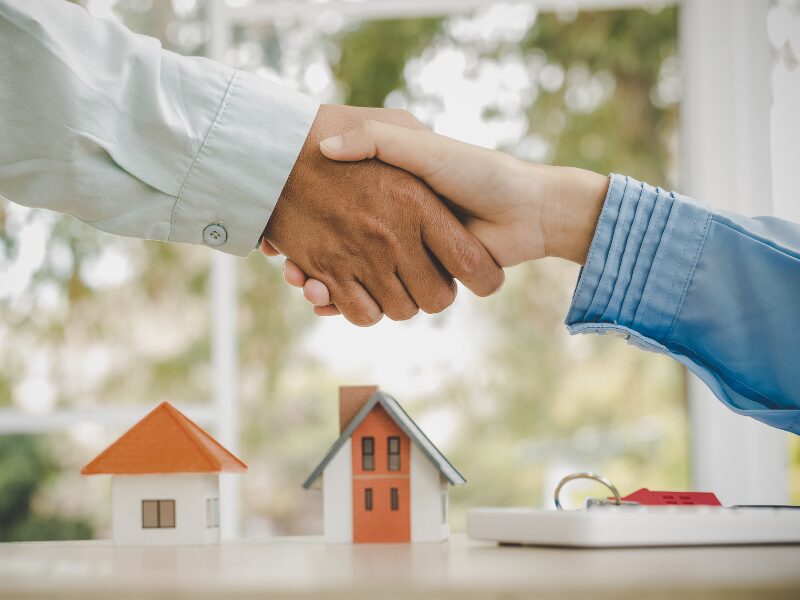Key Takeaways
- Debt recycling is a strategy that converts non-deductible debt (home loans) into tax-deductible debt (investment loans) by using equity to invest in income-producing assets.
- A property investor can start by paying down their non-deductible home loan. Then, they borrow against the equity in their home and invest in income-generating properties.
- Over time, they can use their income from their property investments, tax savings, and other sources of income to repeat the cycle.
- Debt recycling makes loan interest tax-deductible, reducing taxable income and potentially saving thousands in taxes, depending on your income.
- By leveraging existing equity, investors can potentially grow their portfolios faster than relying solely on savings or cash flow.
- Debt recycling can be tailored to suit the needs and goals of property investors. For instance, they can opt for an interest-only investment loan to redirect funds into non-deductible debt reduction or towards the purchase of more properties.
- To successfully pull off a debt recycling strategy, consult a financial advisor, use a debt recycling calculator, and invest in the right income-producing properties.
- Market fluctuations, rising interest rates, and the complexity of the strategy require careful planning and professional advice.
- Work with a financial advisor or accountant experienced in debt recycling and a mortgage broker like Dark Horse Financial for the right loan structure.
With favourable tax incentives and the potential for long-term capital growth, it’s no wonder that many Australians turn to real estate as a way to build financial security. As a property investor, it’s not just about buying assets—it’s about adopting a strategy to maximise returns and minimise costs. Debt recycling does just that.
Debt recycling allows property investors to repurpose their existing home loan into investment debt, creating a more tax-efficient structure that can significantly enhance their wealth-building journey.
Let’s explore what debt recycling is, how it works, and why it’s the perfect strategy for property investors in Australia.
What is Debt Recycling?
Debt recycling is a financial strategy that allows property investors to convert non-deductible debt (such as a home loan) into tax-deductible debt (such as an investment loan). The goal is to use the equity in your existing property to invest in income-producing assets, such as shares or additional properties, while simultaneously reducing your non-deductible debt.
In simpler terms, debt recycling enables you to “recycle” your mortgage into a more tax-efficient structure, allowing you to build wealth faster and reduce your overall interest costs over time.
Understanding Non-Deductible vs. Deductible Debt: Why It Matters for Property Investors
For property investors in Australia, understanding the difference between non-deductible debt and deductible debt is important to executing a debt recycling strategy effectively.
- Non-Deductible Debt: This refers to loans used for personal purposes, such as a home loan for your primary residence. The interest paid on non-deductible debt is not tax-deductible, meaning it doesn’t reduce your taxable income.
- Deductible Debt: This refers to loans used to generate income, such as an investment property loan or a loan to purchase shares. The interest on deductible debt is tax-deductible, meaning it can be claimed as an expense to reduce your taxable income.
Knowing the difference between these two types of debt allows investors to properly execute and utilise debt recycling. Though property investors may already have mortgages for income-generating properties, they cannot use these home loans as the basis of debt recycling because they are already non-deductible.
Property investors should use their personal home, which isn’t tax-deductible, as the starting point of their debt recycling strategy. They can then use the equity in their home to purchase income-generating properties.

How Does Debt Recycling Work for Property Investors?
To understand how debt recycling works, let’s break it down into a step-by-step process:
Step 1: Build Equity in Your Property
Let’s say for example your home is worth $1 million and you have $500,000 remaining on your mortgage. That means you have $500,000 in equity.
The first step is to use personal funds to pay down your mortgage and increase equity. Let’s say you have $200,000 in your savings or on an offset account. You use this to pay down your mortgage, bringing it down to $300,000 and raising your equity to $700,000.
Step 2: Access Your Equity
Once you’ve increased your equity, you can borrow funding secured against the equity of your home loan. The amount should be the same as what you paid down. In our example, you can borrow up to a percentage of your home’s $700,000 equity.
Step 3: Invest in Income-Producing Assets
The funds can now be used to invest in income-producing investment properties. The key here is to ensure that the new debt is used for investment purposes, as this makes the interest on the loan tax-deductible.
Step 4: Use Income to Pay Down Non-Deductible Debt
As your property investments generate income (rental or resale income), you can use this money to pay down your non-deductible debt (your home loan) again. Over time, this reduces your non-deductible debt while increasing your investment portfolio.
Step 5: Repeat the Process
As your non-deductible debt decreases and your investment portfolio grows, you can repeat the process to further recycle your debt and build wealth.

Why Debt Recycling is Beneficial for Property Investors in Australia
Debt recycling offers several benefits for property investors in Australia, making it a powerful wealth-building strategy. Here’s why:
1. Tax Efficiency
As a property investor, the Australian tax system allows you to claim tax deductions on the interest paid on loans used to purchase income-producing assets. By converting your non-deductible home loan into deductible investment debt, you can effectively reduce your taxable income. This means more money in your pocket, which you can use to pay down your home loan faster or reinvest into your property portfolio.
2. Accelerated Wealth Creation
Debt recycling allows you to leverage your existing equity to invest in additional income-producing assets. This means you can grow your investment portfolio faster than if you were relying solely on savings or cash flow.
3. Flexibility
Debt recycling is a flexible strategy that can be tailored to suit your individual financial goals and circumstances. For property investors, this means you can structure your loan to maximise gains. For instance, you can take out an interest-only loan to purchase an investment property, using the interest savings from the first few years of the loan for various purposes, like maintaining, renovating, or purchasing more properties.
4. Faster Debt Reduction
A common misconception is that debt recycling means incurring more debt. While it may seem that way, debt recycling doesn’t increase debt and only recycles it. This strategy can actually even help you pay off your mortgage faster. By reducing your taxable income and increasing your investment returns, you have the potential to generate more disposable income, which can be used to pay down your home loan more quickly. This means you could be mortgage-free sooner than you think while still benefiting from your investment properties.
4. Long-Term Financial Security
By building a strong property investment portfolio and reducing your non-deductible debt, debt recycling can help you achieve long-term financial security. This is especially important for property investors who are looking to build wealth for retirement or other financial goals.

How Property Investors Can Debt Recycle in Australia
Now that you understand the benefits of debt recycling, let’s take a closer look at how property investors debt recycle:
1. Assess Your Financial Position
Before you start debt recycling, it’s important to assess your financial position. This includes reviewing your current debt, equity, income, and expenses. You should also consider your risk tolerance and investment goals.
2. Speak to Professionals
Debt recycling is a complex strategy that requires careful planning and execution. It’s highly recommended that you speak to a financial advisor or mortgage broker who specialises in debt recycling for property investors. They can help you determine whether this strategy is right for you and guide you through the process.
3. Use a Debt Recycling Calculator
A debt recycling calculator in Melbourne is a useful tool that can help you assess the potential benefits of this strategy. By inputting your financial details, you can estimate how much you could save in interest and taxes, as well as how quickly you could pay down your non-deductible debt.
4. Carefully Select Investments
When investing in properties, carefully review factors that will affect the income it will potentially generate. Research the location, the rental market in the area, and other factors to get a clear picture of how much your property will generate over time. Selecting highly profitable investments can make your debt-recycling strategy work effectively.
6. Monitor and Adjust Your Strategy
Debt recycling is not a strategy you can leave unattended. It’s important to regularly monitor your investments and adjust your strategy as needed. This includes reviewing your loan structure, investment performance, and tax position.
Is Debt Recycling For Property Investors Right For You?
Debt recycling for property investors is a proven strategy for building wealth more efficiently by utilising non-deductible debt. It allows you to create a tax-effective investment structure, which can reduce your taxable income, accelerate your wealth creation, and help grow your property portfolio.
However, it’s important to proceed with caution, consider the risks and ensure you have the right loan structure in place.
If you’re looking to take advantage of this strategy, start by assessing your current debt, consulting with a financial expert, and using tools like a debt recycling calculator to determine your potential returns. With careful planning, debt recycling can be an excellent way to build wealth as a property investor in Australia.
Start Debt Recycling Today
If you think this strategy is right for you, contact our team at Dark Horse Financial to get started. We’re experts in investment loans and complex financial strategies. We’ll make sure you’re getting the right loan to maximise your returns and minimise tax costs. Send us a message today.
Disclaimer: The information provided in this article is for general informational purposes only and does not constitute legal, financial, tax, investment, or any other form of professional advice. It is not intended to be and should not be relied upon as a substitute for tailored advice from a qualified professional who is aware of the facts and circumstances of your individual situation. Readers should seek independent advice before making any financial or investment decisions.





